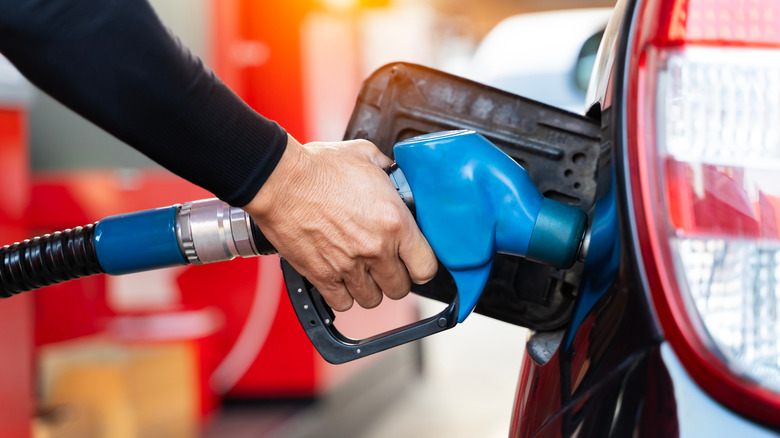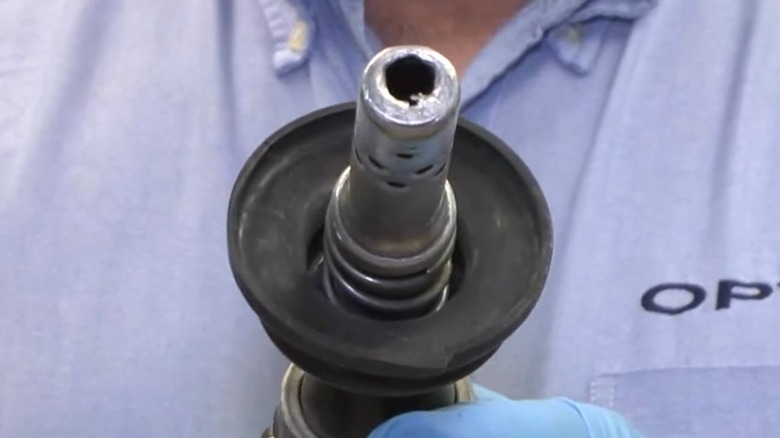
From trying to remember which side your gas tank is on to issues with the pump mysteriously clicking off, a quick fill-up isn't always straightforward. Fortunately, there are some reasons why the pump might continue to automatically stop and some steps to address it. It could be related to the pump nozzle, the gas station, or your vehicle. For example, the nozzle could be damaged, where a bend or pinch could impact the shut-off sensor. It could also be an issue with a particular gas station's flow
rate, which may be delivering fuel a bit too quickly for your vehicle to handle, triggering the shut-off system. Finally, a pump continually shutting off while fueling could also indicate an issue with your vehicle's fuel system.
A fuel pump nozzle is likely a bit more intricate a design than you'd think. For safety, these pumps shut off automatically to prevent gasoline overflow. Essentially, the nozzle has a place where fuel flows out, but it also includes a small venturi pipe, which features an intake near the tip of the spout that looks like a tiny hole. This intake hole sucks in air as the gas is dispensing, and when a float valve inside the fuel tank registers its full, the tank stops venting. This then creates a ripple of pressure that temporarily blocks the venturi intake on the nozzle from taking in air, which causes a diaphragm inside the pump to shut, stopping the flow of fuel.
Read more: 9 Tire Brands Owned By Michelin
So How Do You Fix It?

Check the pump nozzle for damage, and if spotted, switch to a different pump. Over time, the spout can bend, which can cause fuel to spray differently and splash back onto the venturi intake. You can also try slowing the flow rate by squeezing the pump handle only part of the way. Or, you can flip the pump handle upside down, placing the venturi higher inside your car's intake port. Alternatively, if you're in the Northeast, you could make fueling someone else's problem, as it's illegal to pump your own gas in New Jersey.
If the issue persists, try another gas station. Vehicle fuel tank filler necks (the hose that connects the gas intake port to the tank) aren't always the same size. If you have a model with a short filler neck, and the gas pump dispenses at a higher rate, gas could enter the filler neck too quickly.
If none of these work, see a mechanic. Your vehicle's fuel tank and venting system could be to blame, such as a faulty tank float or blockage. A tank must vent as it's being filled, so a tube out of the top of the tank pushes air out. However, this vented air also contains fuel vapor, and must first be routed through a charcoal filter, making it safe. Unfortunately, this filter can get plugged up with debris, causing a change in pressure, triggering the shut-off.
Want the latest in tech and auto trends? Subscribe to our free newsletter for the latest headlines, expert guides, and how-to tips, one email at a time.
Read the original article on SlashGear.










